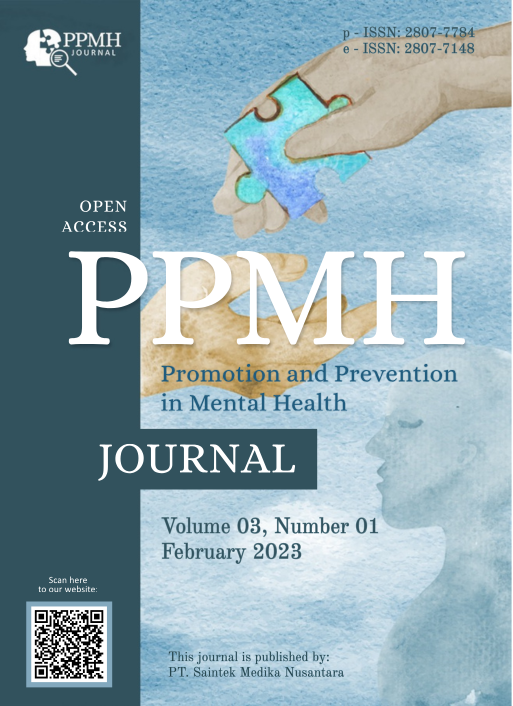Abstract
The mortality rate in hemodialysis patients with low quality of life will increase compared to the average population. Quality of life is an essential indicator of the effectiveness of hemodialysis measures provided, so quality of life is also an essential goal in the treatment of end-stage renal failure disease. This study aimed to determine the relationship between compliance with hemodialysis and the quality of life of patients with chronic renal failure at Lavalette Hospital. This research method uses casual comparative research with a cross-sectional design. The sample was Chronic Kidney Failure patients who routinely performed hemodialysis, with as many as 98 respondents. The research instruments used were the End-Stage Renal Disease Adherence Questionnaire (ESRD-AQ) and quality of life instruments, which were also used on the KDQOL SFTM 1.3 scale. The data analysis method used chi-square correlation. The results showed that most of the respondents in the Hemodialysis Room of Lavalette Hospital Malang City were compliant with HD and had a good quality of life. The conclusion obtained from this study is that there is a relationship between HD compliance and quality of life in patients undergoing routine hemodialysis at Lavalette Hospital.
References
Ariani, S. (2016). Stop Gagal Ginjal dan Gangguan-Gangguan Ginjal Lainnya: Seputar Ginjal dan Ragam Jenis Lainnya. Wirogunan.
Baradero, M. (2008). Klien Gangguan Ginjal Seri Asuhan Keperawatan. EGC.
Depner, T. A. (2005). Hemodialysis adequacy: Basic essentials and practical points for the nephrologist in training. Hemodialysis International, 9(3), 241–254. https://doi.org/10.1111/j.1492-7535.2005.01138.x
Hays, R., Kallich, J., Mapes, D., Coons, S., Amin, N., & Carter, W. (1997). Kidney disease quality of life short form (KDQOL-SFTM)Version 1.3: A Manual for use and scoring. RAND.
Hutagaol, E. V. (2017). Peningkatan Kualitas Hidup Pada Penderita Gagal Ginjal Kronik Yang Menjalani Hemodialisa Melalui Psychologikal Intervention Di Unit Hemodialisa RS Royal Prima Medan. Jumantik, 2, 42–59. https://doi.org/10.1080/13507486.2015.1047603
Indanah, Sukarmin, & Rusnoto. (2018). Kualitas Hidup Pasien dengan Gagal Ginjal. The 7th University Research Colloqium 2018, 608–615.
Joshi, V. D. (2014). Quality of life in end stage renal disease patients. World Journal of Nephrology, 3(4), 308. https://doi.org/10.5527/wjn.v3.i4.308
Kamerrer, J., Garry, G., Hartigan, M., Carter, B., & Erlich, L. (2011). Adherence In Patients On Dialysis: Strategies for Succes. Nephrology Nursing Journal.
Kemenkes. (2011). Kepatuhan dalam Pengobatan. Kementerian Kesehatan Republik Indonesia.
Kim, Y., L.S., E., Phillips, L. R., Pavlish, C., & Kopple, J. D. (2010). The End-Stage Renal Disease Adherence Questionnaire (ESRD-AQ): Testing The Psychometric Properties in Patients Receiving In-Center Hemodialysis. Nephrology Nursing Journal, 37(4), 377–393. https://www.ncbi.nlm.nih.gov/pmc/articles/PMC3077091/
Kozier. (2010). Buku Ajar Fundamental Keperawatan volume 2 edisi 7. EGC.
Kusniawati, K. (2018). Hubungan Kepatuhan Menjalani Hemodialisis Dan Dukungan Keluarga Dengan Kualitas Hidup Pasien Gagal Ginjal Kronik Di Ruang Hemodialisa Rumah Sakit Umum Kabupaten Tangerang. Jurnal Medikes (Media Informasi Kesehatan), 5(2), 206–233. https://doi.org/10.36743/medikes.v5i2.61
Notoatmodjo. (2012). Promosi Kesehatan Ilmu Prilaku. Sagung Sento.
Nursalam. (2016). Metodologi Penelitian Imu Keperawatan: Pendekatan Praktis Edisi 4. Jakarta: Salemba Medika. Jakarta: Salemba Medika.
Nursalam. (2016). Metodologi Penelitian Imu Keperawatan: Pendekatan Praktis Edisi 4. Salemba Medika.
Padila. (2018). Buku Ajar :Keperawatan Medikal Bedah. Nuha Medika.
Rahayu, F., Ramlis, R., & Fernando, T. (2018). Hubungan Frekuensi Hemodialisis dengan Tingkat Stres pada Pasien Gagal Ginjal Kronik yang Menjalani Hemodialisis. Jurnal Kesehatan, 7(2), 1–7.
Rahman, M. T. S. A., Kaunang, T. M. D., & Elim, C. (2016). Hubungan antara lama menjalani hemodialisis dengan kualitas hidup pasien yang menjalani hemodialisis di Unit Hemodialisis RSUP. Prof. Dr. R. D. Kandou Manado. E-CliniC, 4(1). https://doi.org/10.35790/ecl.4.1.2016.10829
Riskesdas. (2018). Hasil Utama Riskesdas 2018. Badan Penelitian Dan Pengembangan Kesehatan. https://kesmas.kemkes.go.id/assets/upload/dir_519d41d8cd98f00/files/Hasil-riskesdas-2018_1274.pdf
Sarastika, Y., Kisan, K., Mendrofa, O., & Siahaan, J. V. (2019). Faktor-Faktor Yang Mempengaruhi Kualitas Hidup Pasien Gagal Ginjal Kronik (Ggk) Yang Menjalani Terapi Hemodialisa Di Rsu Royal Prima Medan. Jurnal Riset Hesti Medan Akper Kesdam I/BB Medan, 4(1), 53. https://doi.org/10.34008/jurhesti.v4i1.93
Suhardjono. (2014). Hemodialisis; Prinsip Dasar dan Pemakaian Kliniknya. Dalam: Setiati S, Alwi, Sudoyo AW, Simandibrata M, Setyohadi B, penyunting. Buku Ajaran Ilmu Penyakit Dalam. Internal Publishing.
Tjokroprawiro. (2015). Buku Ajar Ilmu Penyakit Dalam. Katalog dalam Terbitan (KDT).
Wahyuni, P., Miro, S., & Kurniawan, E. (2018). Hubungan Lama Menjalani Hemodialisis dengan Kualitas Hidup Pasien Penyakit Ginjal Kronik dengan Diabetes Melitus di RSUP Dr. M Djamil Padang. Jurnal Kesehatan Andalas, 7(4), 480. https://doi.org/10.25077/jka.v7.i4.p480-485.2018
WHO. (2012). Programe on Mental Health, WHOQOL User Manual. In World Health Organization (Vol. 9, Issue 1). https://doi.org/10.4091/iken1991.9.1_123
Widayati, D., & Lestari, N. (2015). Peningkatan Kualitas Hidup Pada Penderita Gagal Ginjal Kronik Yang Menjalani Terapi Hemodialisa Melalui Psychological Intervention Di Unit Hemodialisa Rsud Gambiran Kediri. Jurnal Ilmu Kesehatan, 3(2), 6–11.
Widyawati, I. Y., Nursalam, N., Kusnanto, K., Hargono, R., & Hsieh, P.-L. (2018). Grieving as an Internal Factor of Nurse-Patient Interaction in a Dialysis Unit. Jurnal Ners, 13(1), 64. https://doi.org/10.20473/jn.v13i1.8005
